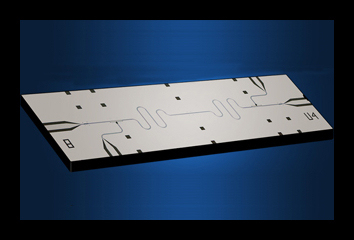Scientists come a step closer towards building a practical quantum computer
 Washington,
August 10 : Physicists at the National Institute of Standards and
Technology (NIST), US, have demonstrated sustained, reliable
information processing operations on electrically charged atoms (ions),
thus raising prospects for building a practical quantum computer.
Washington,
August 10 : Physicists at the National Institute of Standards and
Technology (NIST), US, have demonstrated sustained, reliable
information processing operations on electrically charged atoms (ions),
thus raising prospects for building a practical quantum computer. The new work overcomes significant hurdles in scaling up ion-trapping technology from small demonstrations to larger quantum processors.
In the new demonstration, NIST researchers repeatedly performed a combined sequence of five quantum logic operations and ten transport operations while reliably maintaining the 0s and 1s of the binary data stored in the ions, which serve as quantum bits (qubits) for a hypothetical quantum computer, and retaining the ability to subsequently manipulate this information.
Previously, scientists at NIST and elsewhere have been unable to coax any qubit technology into performing a complete set of quantum logic operations while transporting information, without disturbances degrading the later processes.
"The significant advance is that we can keep on computing, despite the fact we're doing a lot of qubit transport," said first author Jonathan Home, a NIST post-doctoral researcher.
The NIST group performed some of the earliest experiments on quantum information processing and has previously demonstrated many basic components needed for computing with trapped ions.
The new research combines previous advances with two crucial solutions to previously chronic vulnerabilities: cooling of ions after transport so their fragile quantum properties can be used for subsequent logic operations, and storing data values in special states of ions that are resistant to unwanted alterations by stray magnetic fields.
As a result, the NIST researchers have now demonstrated on a small scale all the generally recognized requirements for a large-scale ion-based quantum processor.
Through its use of ions, the NIST experiment showcases one promising architecture for a quantum computer, a potentially powerful machine that theoretically could solve some problems that are currently intractable, such as breaking today's most widely used encryption codes.|
|
